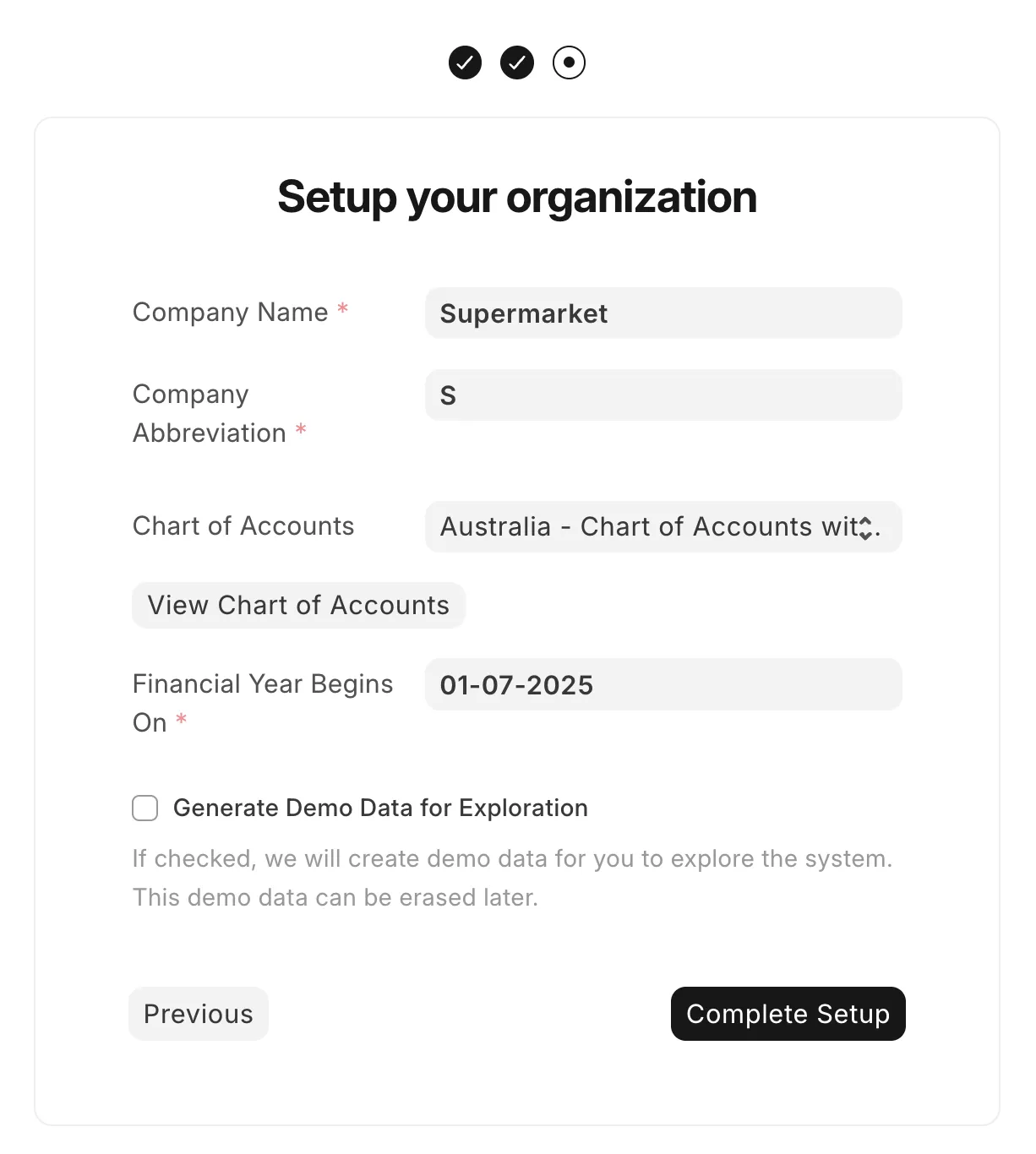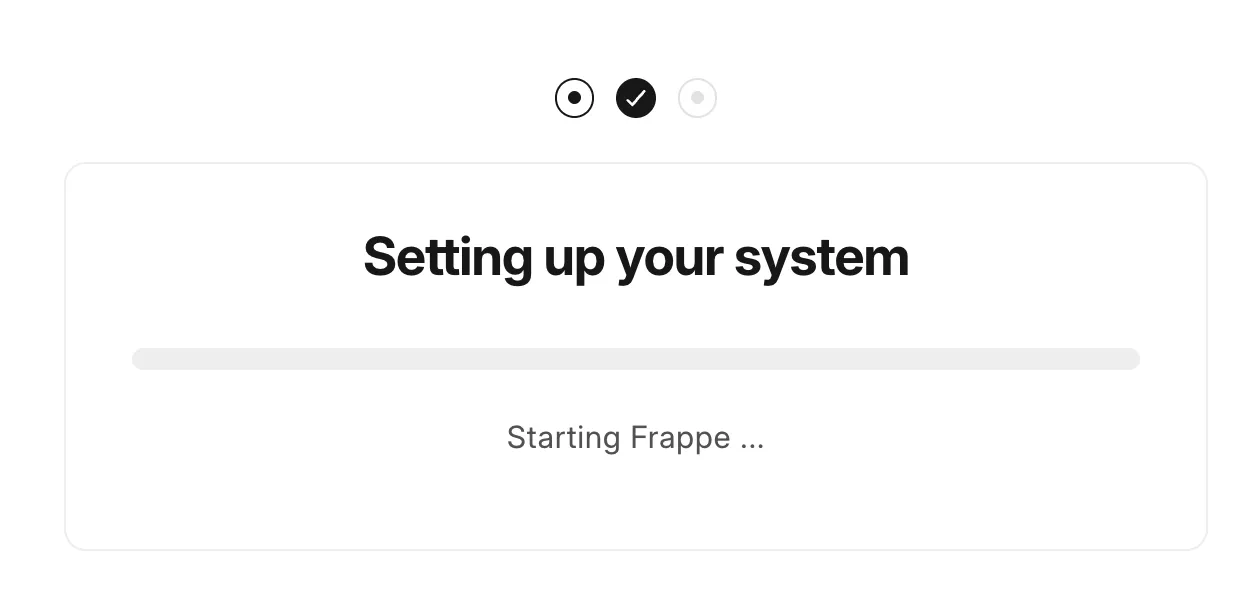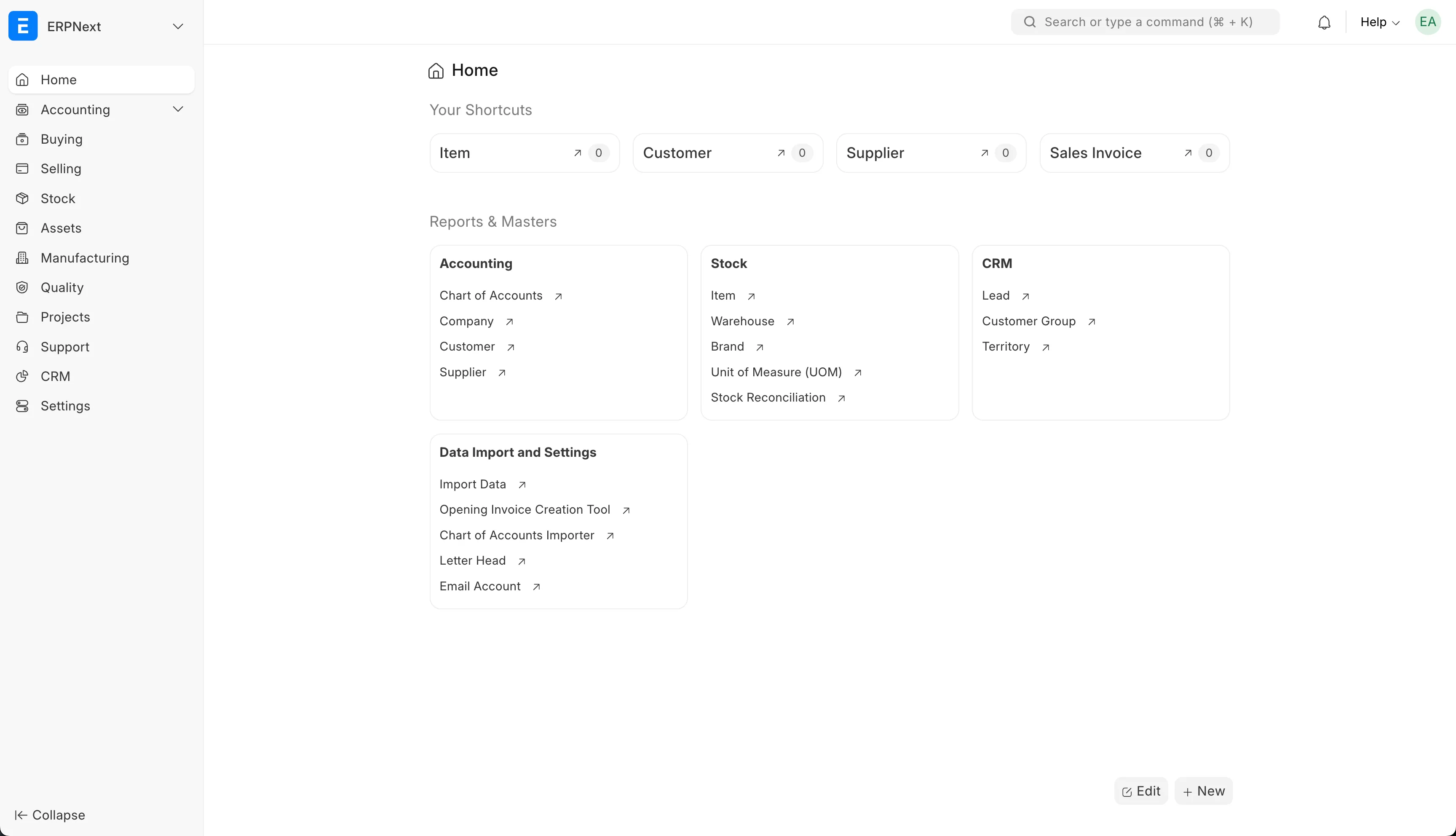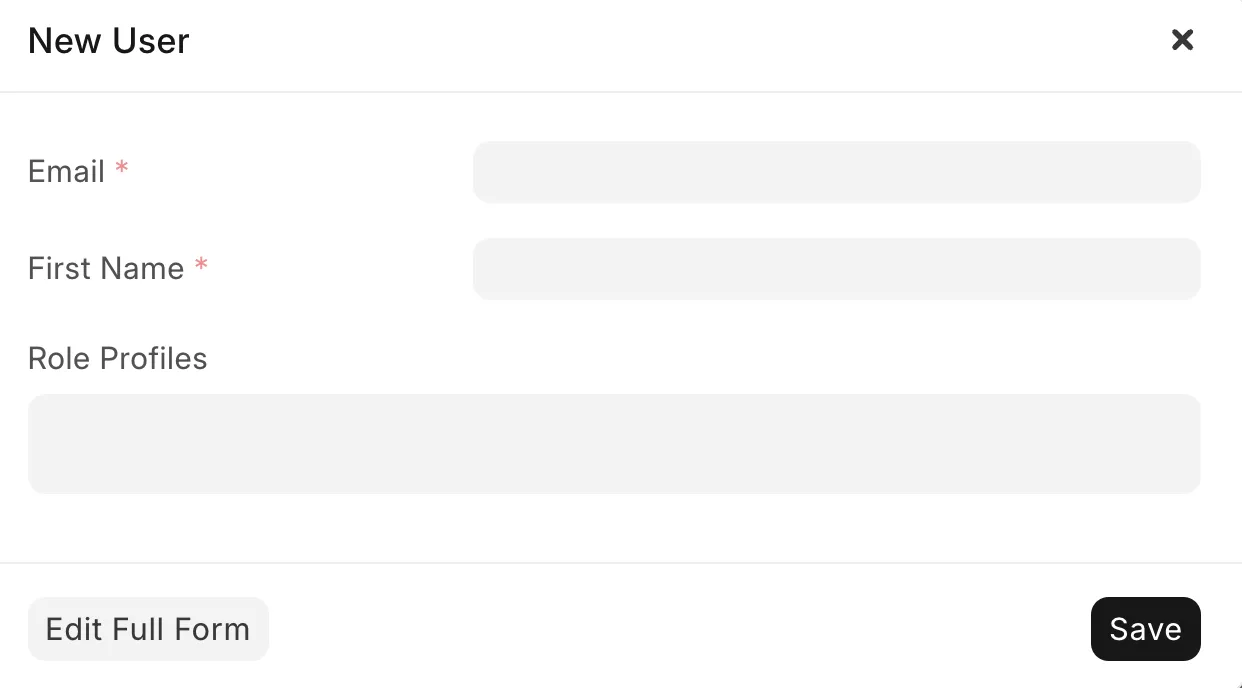ERP for Everyone 02: Setup
Get your company information into the ERP and add users to help with the setup.
Published 2025-09-11
Assuming you gave the commands 5-10 minutes to run, and you didn’t see any errors, you should now have ERPNext installed on your VPS and accessible via your domain.
Head to erp.yourdomain.com (replace yourdomain.com with your actual domain) in your web browser. You should see a login screen that looks like this:

Enter the username Administrator and the password admin. You will then see a welcome screen. Select the settings suited to your location and the currency that your business operates in:

You then need to setup an account. Enter your full name, email address, and a password (50+ characters ideally), then click “Next”. Now you can input your organisation’s details. This includes the name, abbreviation, chart of accounts, and financial year start date. Do not tick the Generate Demo Data box, we want to start with a clean slate.

ERPNext will show you a loading screen while it sets up your organisation. This may take a few minutes, so be patient.

Once it’s finished, you’ll see the ERPNext dashboard. Yay! Let’s not celebrate just yet though, we still have a bit more setup to do.

If you’d like to add other users to help you with your company’s setup, head to https://erp.yourcompany.com/app/user and click the Add User button in the top right. Fill out the email and first name of the new user, and allocate them roles based on what they do in the business. In general, you should aim to allocate the minimum amount of roles for them to do what they need to do. If you’re not sure which role to allocate, just take a guess, you can always allocate them more later!

Finally, we need to do a small but important security uplift to make the administrator password stronger. Log out of your account by clicking your user icon in the top right and selecting Log Out. Then, log back in as Administrator with the password admin. Head to https://erp.yourcompany.com/app/user/Administrator#settings_tab and change the password to something much stronger (50+ characters ideally), then hit Save. I also recommend you set up an IP restriction in the security settings to only allow logins from your office or home IP address.
That’s all for this blog post! In the next one, we’ll dive into setting up the items that your company buys and sells. Click here to move to the next step.